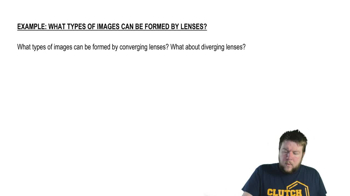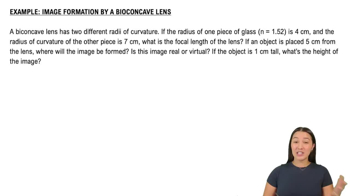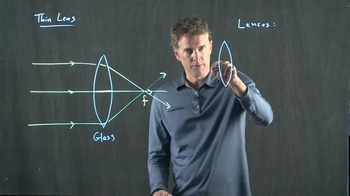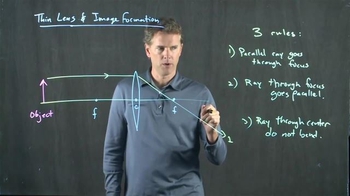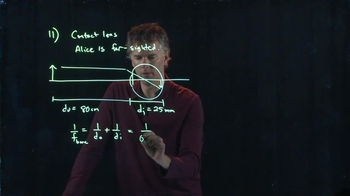33. Geometric Optics
Thin Lens And Lens Maker Equations
Learn with other creators
Practice this topic
- Multiple Choice
A biconvex lens has a focal length of 12 cm. If an object is placed 5 cm from the lens, where is the image formed? Is it real or virtual? Is it upright or inverted? What's the height of the image if the object is 2 cm tall?
1284views3rank1comments - Multiple Choice
A biconvex lens has a focal length of 12 cm. If an object is placed 5 cm from the lens, where is the image formed? Is it real or virtual? Is it upright or inverted? What's the height of the image if the object is 2 cm tall?
991views19rank - Textbook Question
A thin lens with a focal length of 6.00 cm is used as a simple magnifier. What angular magnification is obtainable with the lens if the object is at the focal point?
960views - Textbook Question
BIO A person can see clearly up close but cannot focus on objects beyond 75.0 cm. She opts for contact lenses to correct her vision. What focal length contact lens is needed, and what is its power in diopters?
992views - Textbook Question
BIO A person can see clearly up close but cannot focus on objects beyond 75.0 cm. She opts for contact lenses to correct her vision. Is she nearsighted or farsighted?
906views - Textbook Question
BIO Ordinary Glasses. Ordinary glasses are worn in front of the eye and usually 2.0 cm in front of the eyeball. Suppose that the person in Exercise 34.52 prefers ordinary glasses to contact lenses. What focal length lenses are needed to correct his vision, and what is their power in diopters?
763views



